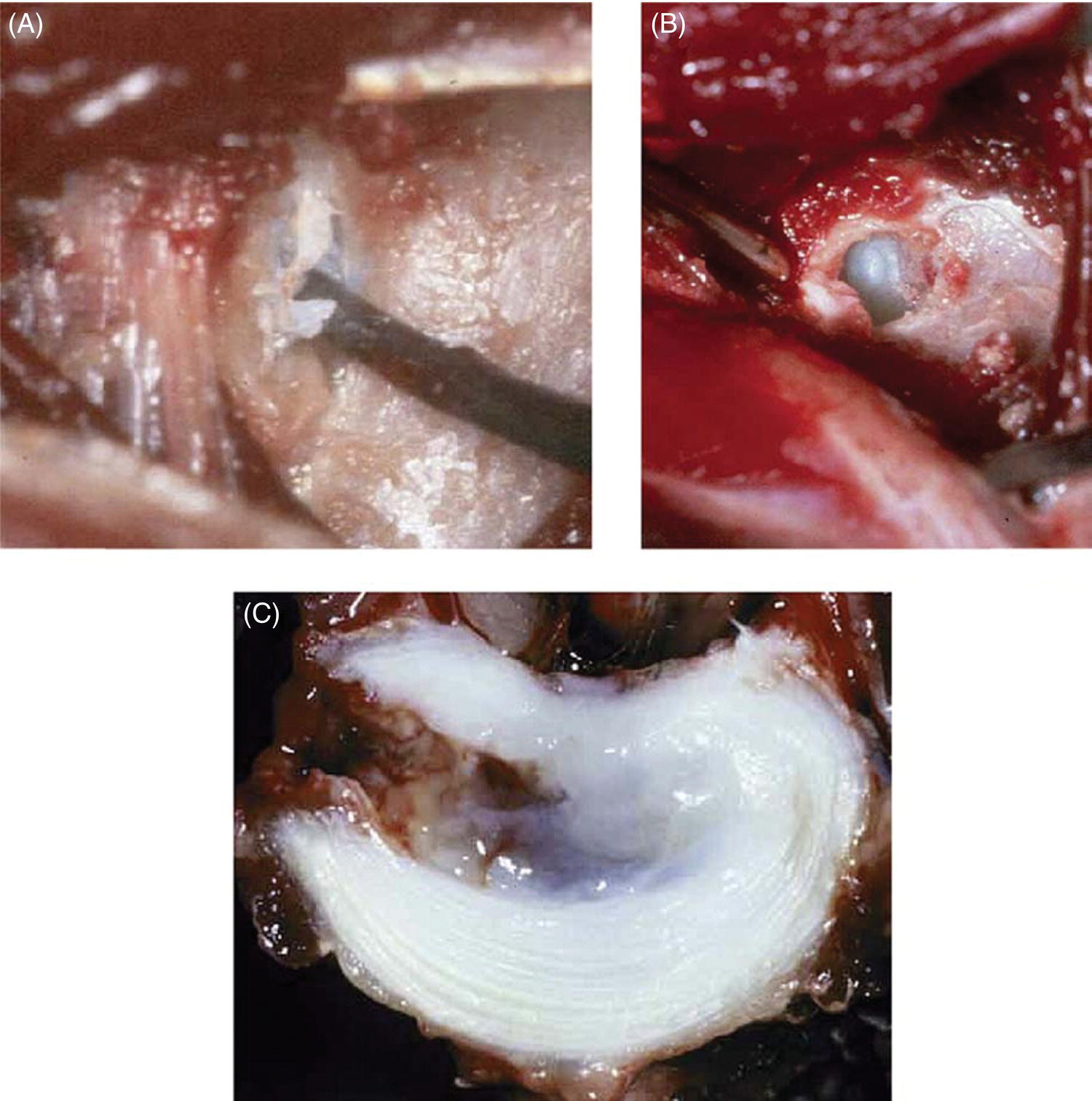35 Brigitte A. Brisson Intervertebral disc (IVD) fenestration was initially described as a treatment modality for disc extrusion [1–3], but its therapeutic efficacy was soon questioned on the basis that fenestration or discectomy alone does not achieve effective decompression of the spinal cord in patients with disc herniation [4–6]. Patients presenting with neurologic deficits that were treated with fenestration alone reportedly had prolonged recovery times similar to those of patients treated conservatively [4, 7] and were less likely to recover than if treated by decompressive surgery [3, 7]. In contrast, a more recent study that described a technique for partial percutaneous discectomy reported an 88.8% recovery rate for patients that still had deep pain perception with a mean time for first improvement of 8.3 days, a rate similar to those reported after decompressive surgery [8]. Of clinical interest is the fact that neurological deterioration has been documented following discectomy and was associated with the displacement or herniation of additional disc material into the vertebral canal during the discectomy procedure [9, 10]. Supporting this, a more recent study assessing the usefulness of percutaneous disc fenestration to treat cervical and thoracolumbar disc extrusion causing mild neurological deficits also reported deterioration of neurological signs in 3 of 32 cases and recurrence of signs in 5 of 32 patients [11]. Overall, a poor success rate is reported for dogs without deep pain perception that are treated with percutaneous discectomy alone [8]; disc fenestration as the sole therapeutic procedure for dogs with paralysis or loss of deep nociception is therefore not recommended [5, 7, 12]. IVD fenestration involves the mechanical removal of the nucleus pulposus (NP) through a window (fenestra) created in the lateral annulus fibrosus (AF) using an air drill and burr (power-assisted fenestration) or a scalpel blade (blade fenestration) [13, 14] (Figure 35.1). The simple creation of a window within the lateral AF does not result in a path for any remaining disc material to herniate in the future [14–16]. In fact, studies assessing the fate of the NP following surgical disc fenestration have failed to document the significant inflammatory reaction that had been postulated as a mechanism for further disc dissolution. Nor has it been confirmed that the window remains open and offers an alternate path for future disc extrusion, since fibrocartilage fills the void created by fenestration soon after surgery [15, 17]. Rather, the effectiveness of fenestration is thought to be governed by the amount of NP removed at the time of surgery [15]. In addition, complete removal of the remaining NP is not expected when performing fenestration [14]. This is supported by a recent study that found some residual disc material in all fenestrated discs even after power-assisted fenestration through a lateral approach [18]. A cadaver study comparing blade and power-assisted fenestration documented that power-assisted fenestration removed on average 65% of the NP compared with approximately 41% of the NP being removed with blade fenestration [14]. Despite these results, this author believes that either technique can remove large amounts of disc material as long as the surgeon is comfortable with the technique and understands that there is no latent or residual effect that will result in further NP dissolution after surgery. Figure 35.1 Intraoperative picture of thoracolumbar IVD fenestration being performed in a cadaver (A) and a clinical patient (B). Saggital section through a thoracolumbar IVD after fenestration demonstrating the incomplete removal of the nucleus pulposus and the remaining nucleus pulposus mostly located on the contralateral side of the spine (C). A study evaluating the effect of surgical approach to the spine determined that using the lateral approach for IVD fenestration may increase the efficiency of the procedure compared with the dorsal or dorsolateral surgical approaches by providing a better angle and working depth for fenestration [19]. Despite the increased efficiency obtained through a lateral approach, it is likely to result in removal of more NP from the ipsilateral side and less from the contralateral side of the IVD being fenestrated [20] (Figure 35.1C). It is also likely that the residual, nonherniated NP still present within the affected disc space is located on the contralateral side to a lateralized extrusion and will be difficult to remove from the side approached for decompressive surgery.
Pros and Cons of Prophylactic Fenestration: Arguments in Favor

Stay updated, free articles. Join our Telegram channel

Full access? Get Clinical Tree


